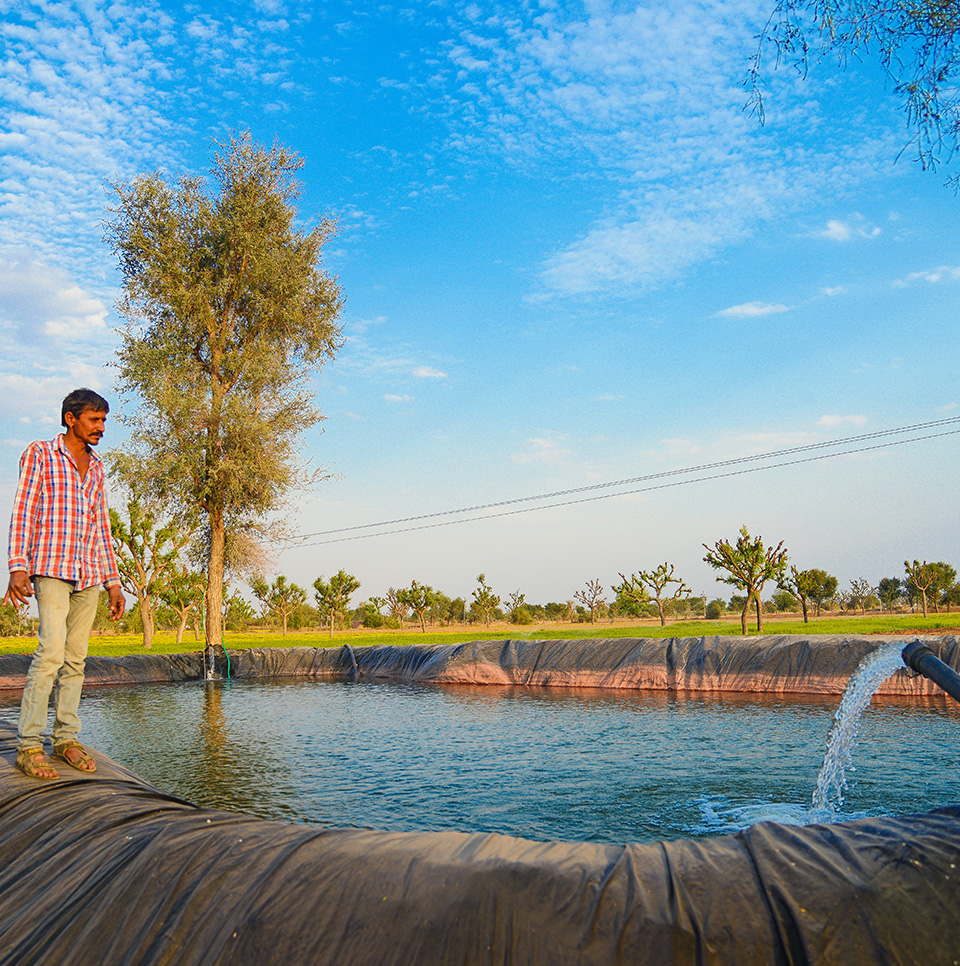
Businesses should provide goods and services in a manner that is sustainable and safe
In response to escalating global concerns over climate change and environmental sustainability, we ensure efficient resource use, reduce carbon emissions, and adopt eco-friendly technologies like alternative fuels and raw materials. Our approach focuses on developing calcined clay limestone-based cement with significantly less clinker. Supported by a robust Supplier Code of Conduct and sustainable sourcing practices, we uphold circular economy principles throughout our operations. Our commitment extends to the responsible management of plastic and electronic waste, along with the safe handling of hazardous materials. Through initiatives like 'Geoclean,' we actively contribute to waste management and uphold Extended Producer Responsibility (EPR) obligations, reinforcing our dedication to sustainable manufacturing and environmental stewardship.
7x
Plastic Negative
Zero
waste to landfill
More than 98%
of input material sourced locally
Supplier Code of Conduct
approved by the Board
Essential Indicators
1. Percentage of R&D and
capital expenditure (capex) investments in specific technologies to
improve the environmental and social impacts of product and
processes to total R&D and capex investments made by the entity,
respectively
|
|
Current
Financial Year
|
Previous
Financial Year
|
Details
of improvements in
environmental and social
impacts
|
|---|---|---|---|
|
R&D
|
2.3
crore
|
1.05
crore
|
Further
Reduction of clinker
factor by 1 to 2% in
existing products of
PPC/ PSC /PCC by
optimising product
mix
|
|
Capex
|
0.13
crore
|
Nil
|
Development
of calcined clay
limestone based cement with
50% clinker to
significantly reduce
carbon foot print as
compared to Ordinary
Portland cement
|
2. a. Does the entity have
procedures in place for sustainable sourcing? (Yes/No)
Yes.
b. If yes, what percentage of inputs were sourced sustainably?
Yes.
- The company has a well-defined Supplier Code of Conduct, which helps the Company to integrate ESG parameter in its procurement.
- We have procedures in place for sustainable sourcing in terms of new supplier registration and Group General Terms Conditions is part of all the major procurements.
- As part of sustainable sourcing, more than 99.84% of input material is sourced locally i.e. within India.
- A large quantum of input material is recycled waste material consisting of industrial, municipal and agriculture waste.
3. Describe the processes in
place to safely reclaim your products for reusing, recycling and
disposing at the end of life, for (a) Plastics (including packaging)
(b) E-waste (c) Hazardous waste and (d) other waste.
- We do not reclaim our products. The Company follows circular economy principles in the manufacturing and end use stage of the product lifecycle.
- The plastic used for packaging as well as generated otherwise is co-processed in cement kiln. The Company is plastic negative.
- Cement manufacturing process does not produce any E-waste. However, E-waste is produced from office operations. All of e-waste generated is sold to registered recyclers.
- Major quantity of hazardous waste generated during the process is co-processed in kiln within plant as per the permission from State Pollution Control Board. Remaining hazardous waste is sent to common incinerator authorised by State Pollution Control Board.
4. Whether Extended Producer
Responsibility (EPR) is applicable to the entity’s activities (Yes /
No). If yes, whether the waste collection plan is in line with the
Extended Producer Responsibility (EPR) plan submitted to Pollution
Control Boards? If not, provide steps taken to address the same.
Yes. Extended Producer Responsibility is applicable to the Company and the Company has registered on government EPR portal as Brand Owner. The Company collects the Waste through its waste management arm ‘Geoclean’ and co-processes it in cement kilns.





